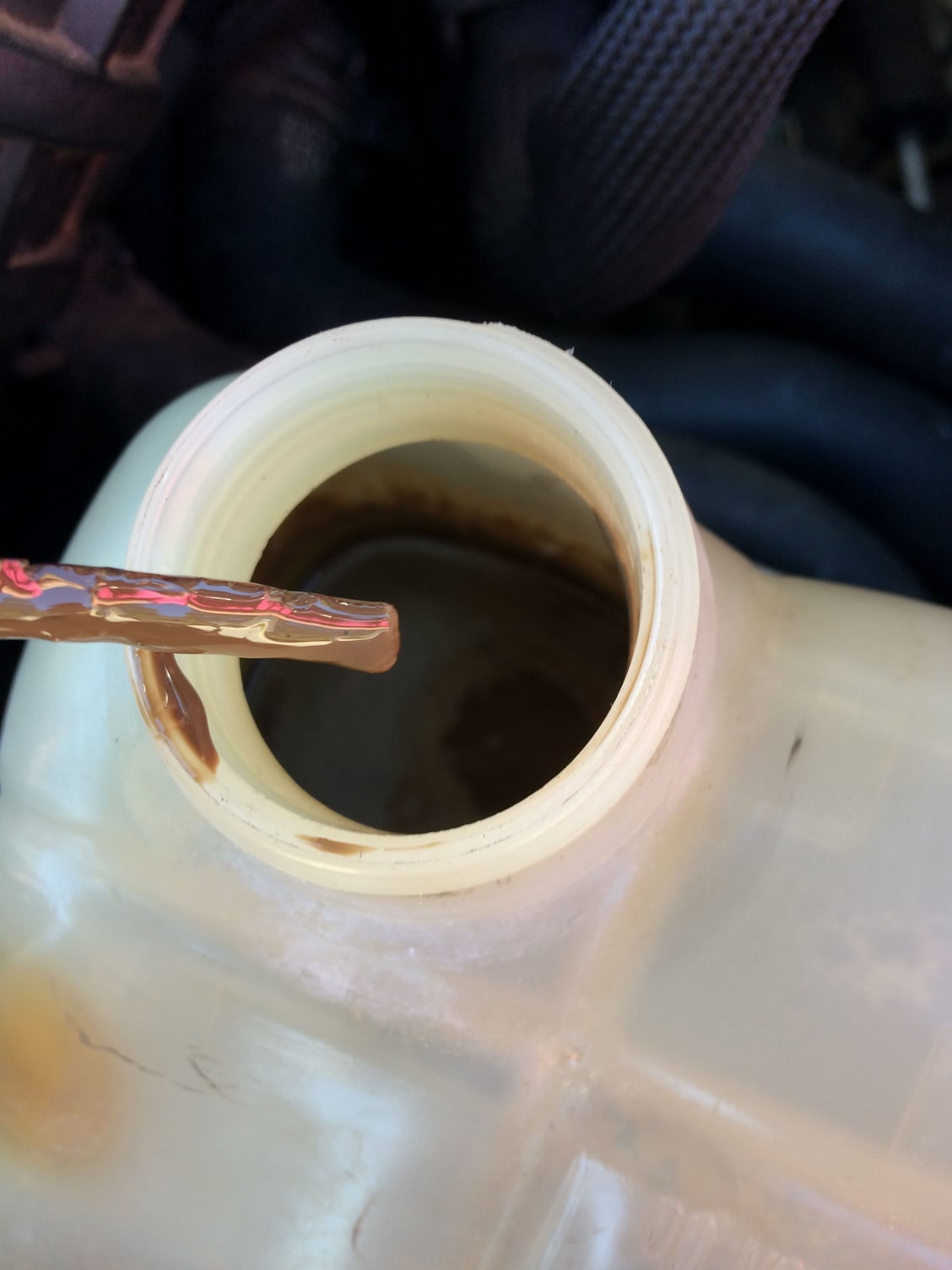

Once you have a damaged head gasket, it will indeed cause oil and coolant mixture, which could be the reason for oil in your antifreeze.Ĭracked Cylinder head: Suppose you have a cracked cylinder head it’s going to cause Oil to mix with coolant. Overheating: An Overheating engine can degrade your head gasket at a faster pace. It doesn’t require much technical knowledge.

If you’re a DIY enthusiast, you can replace the oil cooler. So, you should fix it once you notice it. This can cause other issues to your cooling system.
#6.0 POWERSTROKE OIL IN COOLANT RESERVOIR CRACK#
If there is a little crack in the oil cooler, it could cause oil and coolant to miss their passing route, resulting in an oil and coolant mixture. Oil Cooler: Some cars are designed with oil coolers that help keep the motor oil at optimum operating temperature. I do not recommend you try removing the cylinder head yourself unless you’re a certified mechanic. In that case, you may have to contact your mechanic to pull off your head cylinder and replace the lousy gasket, or you read on to find out the trick I use to repair a leaky head gasket without pulling off the engine. Suppose the head gasket tester determines that a leaky head gasket is a culprit. You can either take your car to a mechanic garage or get a head gasket tester kit and see if the head gasket is the cause. If you have an Overheating engine along with oil residues in the coolant, it could indicate a blown head gasket that needs to be given adequate attention. When a car has a blown head gasket, it can cause oil and antifreeze to mix, which could cause this problem. Leaky Head Gasket: The head gasket is the gasket that sits between the head cylinder and the engine block to prevent coolant and oil from leaking out or mixing. Let’s quickly look at the possible causes. Many factors can contribute to this issue. Failure to fix this issue on time will cause catastrophic engine damage. You might ask, what does oil in coolant look like? Suppose you have an oil and coolant mixture you’ll see a milky color liquid in the reservoir tank. If you remove your coolant reservoir tank and see an oil-like substance, you probably have oil getting into your coolant somehow. Depending on your engine coolant specification, your coolant could be red, green, orange, or pink. If there is oil getting into your coolant, you will see residues of oil in the radiator cap. When you remove your radiator or coolant reservoir cover, you should be able to see the color of your antifreeze in the reservoir tank. How do I know if there is oil in my coolant? Hopefully, for the sake of saving hundreds of dollars on replacement costs, I’ll share a trick that I have been using for years. Do not forget that coolant in oil and antifreeze in Coolant are two different issues that need adequate attention. There are different causes of which oil gets into coolant that you should watch out for, hence this article. In this article, I will explain at length the common causes of oil in Coolant and what you should do to fix this issue. This can damage the transmission to the point where it needs to be replaced.Finding out oil in Coolant Reservoir can cause you to have a ruined day. The bad news is that the coolant can make its way to the transmission. This causes the coolant to be pink and foamy looking. Cracks can develop between the radiator and the cooler that allow transmission fluid to get mixed into the coolant. Often, the transmission cooler is part of the radiator. Many cars with an automatic transmission have a cooler for the transmission fluid. Another Coolant Problem – A Leaking Transmission Cooler And the cooling system will need to be flushed and refilled. The oil cooler and it’s gasket will need to be replaced. If the oil cooler leaks, the engine will still perform normally.įortunately for the customer, a leaking oil cooler is a much less expensive repair. However, a blown head gasket usually affects the engine’s performance. This can cause many people to think that the head gasket is blown. If the oil cooler leaks, the main symptom is oil in the coolant. But turbocharged engines usually have them. Oil coolers are not very common in gasoline engine vehicles. Pushing cold oil through the radiator and water pump may damage them.) The radiator and water pump should be inspected for leaks or damage.The entire cooling system will need to be flushed.The head gasket, of course, will need to be replaced.If the head gasket is bad, several repairs may need to be done: This will result in a white cloud of sweet smelling exhaust.Ī blown head gasket can be verified with a compression test. Coolant can also leak into the combustion chamber. This results in the brown sludge that can be seen in the top of the radiator, and the coolant reservoir. When a head gasket fails, oil can leak into the cooling passages and then end up in the coolant.


 0 kommentar(er)
0 kommentar(er)
